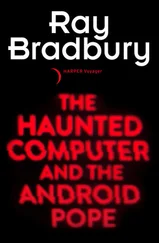I am something of a sports fan and so, even though I was traveling on the day of the January 1984 Superbowl, still managed to join the crowd in an airport bar to watch the game on television. I don’t remember much about the game, but I do remember watching the most riveting television commercial I have ever seen. In a gray, futuristic amphitheater, hundreds of colorless, zombie-like skinheads were pictured watching a Big Brother-like character on an enormous video screen. Suddenly, a healthy-looking Amazon, who was the only figure in the scene whose face was depicted in flesh tones, wearing a vividly colored T-shirt, ran into the amphitheater, chased in eerie silence by a phalanx of robotlike guards. She carried a sledge hammer in her hands, and as she broke into the center of the room and the guards closed in on her, she lofted the hammer up at the gigantic screen, shattering it into a thousand pieces.
It was the pre-announcement for Macintosh. Like David challenging Goliath, Apple announced that it wasn’t about to roll over and die before the IBM juggernaut. With imagery that was a skillful blend of George Orwell and H. P. Lovecraft, the company whose guiding spirit and patron saint was not the businessperson but the midnight computer hacker announced that it would fight IBM in the only way it knew how—with superior and boldly innovative technology.
The Macintosh was everything people had expected of IBM’s PCjr. The “Mac,” as it soon came to be known with affectionate familiarity, was a brilliant piece of engineering, incorporating dozens of novel and intriguing hardware and software concepts. Whether or not it was responsible for the
PCjr’s lackluster performance in the market (and there is little reason to think the two machines competed head to head, since Macintosh was substantially more expensive), comparisons between the two January market entries were inevitable.
The fact was that the PCjr just didn’t move. IBM the invincible had come up with a dud. This meant that PCjr software didn’t move either. Months later, after the jr’s keyboard had been roundly trashed by virtually every reviewer in the computer press, IBM did something it almost never does—it fixed the keyboard, which was widely perceived to be one of the major sources of the machine’s problems in the marketplace. Once the Mac came along, jr had another, less fixable problem—it was boring, compared with the excitement generated by the Mac. By mid-1984, jr was in trouble. By the end of the year, despite efforts at resuscitation and a brief upswing in sales, it was still in trouble. And that meant that Sierra On-Line was also in trouble. When IBM finally announced in March 1985 that production of the jr would cease, Ken managed to soften the blow by cutting good deals for the software with Tandy, whose Model 2000 computer was compatible with the jr software, but the jr venture was still far from the bonanza he had hoped for.
Sierra had already taken two rounds of venture financing, the last in the summer of 1983. And Ken had hoped that if his company needed any more before going public, it would be at a. valuation far higher than that. But the venture capitalists were not in a mood to put much of anything into software in the spring of 1984. And when Ken went back to his venture people to explain that he was going to need another couple of million because IBM sales weren’t up to snuff, he got the shock of his life.
His investors didn’t want to have to write off the money that had already put into Sierra, but they weren’t very happy about the previous year’s valuation either. So they agreed to put up the money, but only if the company’s valuation were cut to half of what it had been before and only if the previous year's financing were recomputed at the new valuation too! Ken was aghast. Still, there was little alternative. Banks wouldn’t grant him a line of credit until after he had secured the venture money, so he was more or less out of options.
By the end of 1984, Ken and Roberta had restored profitability to the company by drastically reducing their costs. Staff was laid off. Their previously lavish expenditures were cut to the bone. However, the founders barely had a majority interest in Sierra, as their company was now known, and we at Brøderbund kept hearing rumors that some of the investors were trying to ease Ken and Roberta out.
I wish that all stories had happy endings—a personal weakness, I suppose. The fact that many of us cared about one another’s welfare, allies and competitors alike, was one of the things we believed to be different about the microcomputer software business. Softalk, in particular, had been the heart and soul of the Apple part of our industry since the magazine’s beginning. And as I’ve already mentioned, Al and Margot Tommervik are among the small number of people whom I personally credit for helping Brøderbund survive and succeed. They are wonderful people, and Softalk was a wonderful magazine. There never were any magazines quite like it.
I saw their place of business only once. It all started with a football game that gave me the opportunity to visit Softalk while I was in the Tommerviks’ neighborhood. When Iowa won the Big Ten football conference championship in 1982 and 10,000 delirious Iowa Hawkeyes descended on Pasadena for the Rose Bowl, our parents and various Carlston siblings, including Gary and me, were in the throng.
The game was anti-climactic—at least for Iowans. Even though I hadn’t lived in Iowa since 1965, I was disappointed that so many of the fans in the Hawkeye bleachers didn’t even look familiar. But New Year’s Eve, the night before the game, wasn’t anti-climactic at all. That night we made our first and only visit to Softalk in its cluttered North Hollywood headquarters.
The whole company was located in a house that at one time had been converted into a storefront. When the Softalk people moved in, they pasted Fiberglas insulation over all the huge glass windows to save heat in the winter and keep the place from broiling in the summer, so the front room glittered with the scattered reflections of a dozen lights, bouncing off the insulation’s aluminum backing.
The house was a rabbit warren of desks, miscellaneous piles of paper, and narrow pathways connecting individual domains. In one corner, a grand piano was buried under a mountain of books, clippings, magazines, and coffee cups. When we all retreated to Margot’s office in the rear of the building to show her our latest game (the pinball simulation called David’s Midnight Magic ), a careless elbow tipped over an already-teetering bookshelf by her desk, triggering an avalanche of half-empty coffee cups, overflowing ashtrays, and floppy disks onto Margot’s sleeping bag, which was unrolled on the office floor.
That was Solftalk— unruly, disorganized, operating at full-tilt even on New Year’s Eve. It amazed me that such a well-crafted, highly polished magazine could come out of such a jungle. But it did, and for years it was one of the most popular computer magazines in the industry. The creative souls who were drawn to the place loved it, and even when the staff grew to seventy people and had to move to larger quarters, the ambience of the place stayed just as funky, informal, and chaotic.
But from the start there were problems with Softalk as a business, even though the problems were not visible to the outside world. Nobody in the organization had much real business experience. As a result, Softalk went for years without computing a profit-and-loss statement or a balance sheet. When they finally got around to figuring out their profitability, in April 1984, they were horrified to discover that they had been losing money—a lot of it—for quite a long time. Softalk had been running on its cash flow. And that works only as long as revenues continue to increase.
Читать дальше










